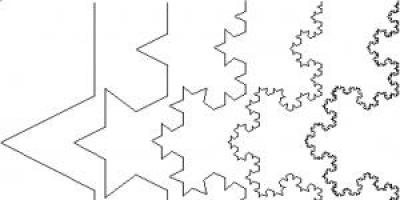For a professional welder, and even for an amateur, a good electrode holder is the key to comfortable and convenient work welding process. When purchasing a holder, you need to know how to choose a much-needed item for welding work, what points you need to pay attention to Special attention, so that later problems would not arise when using it.
Device
Let us briefly consider the design of the electrode holder. Several important factors depend on the design of the device:
- quality of welded joints;
- master's labor productivity;
- convenience and safety of work.

inexpensive electrode holder
Derzhak standard type is a tool consisting of several parts: body, clamp, handle, moving parts. But different kinds may have some structural features. More details below.
Kinds
Let us briefly consider what types of electrode holders exist. Electrode holders are divided into universal And specialized. The production of both groups is regulated by GOST standards. For homemade ones, see the separate subheading below.
The universal electrode holder is the most popular, as it allows welding in various spatial positions.
There is also a more detailed classification:
1. Clamping clothespin holder (spring or lever) characterized by a simple design and low price. The main disadvantage is weak fixation of the electrode.
This type can be made in two modifications:
- simple characterized by compatibility with most types of welding machines and the complete absence of non-insulated areas;
- automated provides high quality seam, significant energy saving and automatic arc ignition.

Clothespin holder
2. Screw Electrode holders allow the cathode to be firmly secured. The main disadvantage is the need to constantly unscrew and tighten the screw in the clamping device when changing the material for welding.

Screw holder
We suggest watching a video where the user compares two holders, a screw one and a clothespin, and makes a choice in favor of the screw one.
 3. Tool design non-cinder type is designed in this way: the electrode is not fixed with a clamp, but is welded to the end of a rod with an insulated surface and completely melts during the joining process. Then the next rod is taken.
3. Tool design non-cinder type is designed in this way: the electrode is not fixed with a clamp, but is welded to the end of a rod with an insulated surface and completely melts during the joining process. Then the next rod is taken.
4. Quite popular among welders of any level is trident fork.
However, this type, made in a simple modification, poses a serious threat to the health of the master due to large quantity unprotected parts.

Homemade “fork” holder
5. The collet holder is used in argon arc welding torches.

Rotary holder
6. The electrode holder with a rotary type clamp allows you to quickly and reliably fix the rod at only one angle.
In addition to the above types, there are also special-purpose units that are used to create a certain type of seam.
A good electrode holder should:
The electrode holder must meet the following mandatory requirements:
- Reliability and confidence of fixation electrical conductor of any diameter in the required position.
- Possibility of fast angle changes electrode output.
- Good and complete contact.
- Security quick replacement electrode.
- Durability use.
- Ease device.
- Insulation of live parts.
- Possibility of welding in hard to reach places.
How not to buy a low-quality holder for a welding machine
Live parts of a quality device must be made of copper and protected insulating material. Some unscrupulous companies manufacture live parts from steel and then coat them with copper. Thus, the parts become very hot and burn quickly.
They look like copper and it is difficult for a non-professional to visually distinguish them from “all-copper” parts. There is one surefire way that requires a magnet. It is necessary to bring a magnet to the part being tested; if the parts are magnetic, then they are made of steel.

Copper jaws of the holder
Popular manufacturers
Let's move on to popular manufacturers of electrode holders.
Telwin is a world leader in the manufacture of welding machines, cutting systems and chargers. Italian company offers holders under the same brand.
Spring electrode holders for welding work from a German company are distinguished by the following characteristics: high-strength and heat-insulating handle; rigid fixation of the dynode in four positions; ergonomics; strength; versatility of use.
Company Trafimet founded in 1974 in the Italian city of Vincenza. Manufacturer offers tools spring type, having the following technical parameters: light weight of the unit; reliability; ease of use.
Russian company “Svarog” produces inverter equipment. Holders from this manufacturer are manufactured in compliance with all state standards; allow welding in all positions, as well as in hard-to-reach places.
 The Swedish concern is one of the world leaders in the production of equipment, materials, accessories, protective equipment and other accessories for welding. The wide range also includes electrode holders screw type, characterized by maximum safety and quality of work. See the video above.
The Swedish concern is one of the world leaders in the production of equipment, materials, accessories, protective equipment and other accessories for welding. The wide range also includes electrode holders screw type, characterized by maximum safety and quality of work. See the video above.
Head office and production of the enterprise EWM located in the German city of Mündersbach. The company specializes in the manufacture and sale of a wide range of equipment, including electrode holders of various types.
Russian trademark BRIMA occupies one of the leading positions in the market of equipment, components and materials for welding. Electrode holders are designed for three groups of consumers: household, professional and industrial.
Company SANTOOL– a reliable manufacturer and supplier of quality welding products. The equipment is produced under several trademarks. The devices have a reliable fixation, electrically conductive parts are insulated from accidental contact.
Russian enterprise Skrab sells products under its own brand of the same name, and also supplies professional equipment from leading manufacturers. The equipment is used in many fields of activity.
SIBRTECH– domestic manufacturer of high-quality tools and equipment. The company offers clamp-type electrode holders. When working with units, it is important that the electrical parts do not come into contact with the product being welded or with human hands. For products from this manufacturer there were comments, watch the video above and below.

Holder SKRAB 27601

How to operate
A few words about how to properly use the holder for welding electrodes. The use of an electrode holder implies not only its direct use, but also proper care behind him. Clamp follows to keep clean, this ensures tight contact of the jaws with the rod, and, accordingly, eliminates burning and extends service life. It is also necessary to avoid burning the remainder of the electrode (cinder) to the very jaws of the holder for the same reasons.
Useful video
Watch the video showing the procedure for replacing a Sibrtech holder by an amateur. At the same time, you will see a review about the defects of this product, what to look for when choosing and purchasing.
Homemade holders for electrodes
 Design "Trident" simple and uncomplicated. There are quite a few ways to assemble this type, the simplest one is presented below.
Design "Trident" simple and uncomplicated. There are quite a few ways to assemble this type, the simplest one is presented below.
The body of the “Trident” is like a rod with three prongs; It is made by bending and welding reinforcement made of carbon steel with a diameter of 8 mm. The middle rod is also bent, its function is to fix the rod in the holder.
The most difficult thing is to organize high-quality contact between the cable and the holder. To do this, you need to bend the tube divided into two halves. The tube acts as an electrical terminal. The first half secures the cable, and the second half supports its insulating braid. The terminal is also tacked by welding.
To insulate the handle, you can use a piece of reinforced durite sleeve, which is placed on the heated fittings.


Here is another option on how to make a fork holder. The photo is clickable, to enlarge, click on the image. How to make such a holder is described in more detail on this website.


Type “Corner” has a similar device to the “Trident”. The main difference is that instead of two spring contacts, a metal corner is used here, and the electrical conductor is held by one tooth, not three.
“Advanced” option homemade instrument assembled from scrap materials. The master will need a pipe with a diameter of 15 mm. and 250 mm long, to which a 3 mm thick plate is attached. and 25 mm wide. The plate is then rolled into a ring with a diameter of 50 mm, the ends are straightened and used for clamping. At the point where the cable is attached, the tube is compressed and a hole is drilled for a bolt that clamps the cable tip. The handle is made of durite. 
Rating: which electrode holder is better
We understand that the issue of choosing a holder is subjective, who likes what. But nevertheless, we believe that when choosing, it is worth taking into account the opinion of the majority. Therefore, we will make a survey about the best electrode holders. We invite you to vote and express your opinion on which holder is the best for you. You can select two answer options at the same time.
Despite the reliability of the factory designs of welding machines, during operation, some of its parts may fail, including the device for holding the electrodes. Of course, you can purchase these spare parts in the store. They are widely available for sale, but the vast majority of professionals prefer to install a homemade electrode holder. Its design is simple, but it must strictly meet certain standards:
- the homemade product must provide dielectric protection for the welder;
- welding holder must be well insulated;
- wires must be fastened securely and efficiently;
- the holder must withstand electrical currents of several hundred amperes;
- the electrode must be held as tightly as possible;
- Replacing electrodes should be simple and quick.
The last two requirements actually contradict each other, so a homemade welding holder is always a compromise for the master.
Holder for a factory-made welding machine
Manufacturers offer three modifications of welding holders:
- Collet holder for electrodes. This is an easy-to-use option. Replacing the cinder with a new electrode is easy, performs excellent protective functions and looks aesthetically pleasing. But the collet is expensive and has a current limitation. In addition, it does not allow you to save on electrodes, since it is forbidden to leave a short cinder.
- Holder for welding - clothespin. The most popular offer from manufacturers. Manufactured in a wide range of sizes, electrode diameters and strengths welding current. The clothespin is not very convenient to use, but it is very reliable. It is characterized by good contact with the electrodes, no restrictions on electric current, and does not require devices. Its disadvantages are the problematic change of cinder and large dimensions.
- Trident or fork. This modification of the holder is for welding equipment, has practically fallen out of use because it does not meet modern standards. The trident is a Soviet standard.

How to make a welding holder with your own hands
A holder for welding machine with your own hands. There are many technologies for making a device, but the most common are the following designs:
- Trident. This is a classic DIY version of the device. Back in Soviet times, welders made their tools precisely according to this principle. The holder is a fork welded from three corrugated pieces of reinforcement. A bicycle handlebar handle or a fragment of a rubber hose is used as an insulator. In some cases, rag insulating tape was used as the dielectric of the holder for do-it-yourself welding. This design is easy to manufacture, but dangerous and inconvenient to use. It provides poor contact with the electrode, the cinder is difficult to remove, and the fittings are constantly oxidized. Soviet welders offered very original ways to make a welding holder. One of the most successful designs is a reinforcing rod welded to a metal corner. Its only drawback is the difficulty of replacing the cinder.
- Trident with a spring. This is an improved version of the DIY welding machine holder described above. This is the same fork, but the tines are located almost in the same plane. The electrode is inserted between the fingers, the central one springs it. This DIY welding holder is made from expensive materials such as high alloy stainless steel. The contact with the electrode is strong, changing the cinder is quite easy. Rubber is used as the dielectric of the do-it-yourself welding machine holder to protect the welder.
- Threaded collet. The holder can be made of any metal. It provides reliable electrode contact, easy replacement of the cinder, is reliable and easy to use. Its disadvantage is the complexity of manufacturing. Design features are indicated in the drawing.

- Clamping collet. This is a modernization of the threaded collet model. Instead of threaded fasteners, a spring mechanism is used. The advantages of the design are obvious - the ease of replacing the cinder and the reliability of fastening the electrodes. Before wondering how to make a holder for welding this design, you need to carefully analyze electrical diagram. The more powerful the spring, the more reliable the contact, and the maximum current strength increases. If you use a weaker clamp, the current load is reduced. It is important to provide a second connector here, which supplies current to the ground. Although it does not need to provide electrical and thermal protection, the contact should be as reliable as possible. It is better if the clamping mechanism is made of brass or copper.
Let's summarize
Each welder decides to purchase a holder in a store or make it himself. But, as practice shows, it is advisable to do homemade devices, both for reasons of financial costs and ease of use.
Despite the high reliability of the design, the proprietary holder for the welding machine may fail at some point in time. At the same time, there are often situations when no spare parts help to fully restore its functionality.
Taking into account the fact that welding operations do not tolerate any delays or stops, you should always have another holder at hand. Professional welders prefer to make a spare electrode holder themselves.
First of all, you need to pay attention to the fact that a homemade welding holder must meet the following requirements, consistent with welding safety standards:
- the handle of the holder must provide reliable protection for the welder (that is, be made of dielectric);
- the holder as a whole must have good thermal protection;
- the current supply wires should be mounted on the holder in such a way as to prevent the possibility of their damage during the welding process;
- the electrode holder is designed for electrical currents of hundreds of amperes;
- the welding rod itself must be fixed in it quite rigidly and as reliably as possible;
- changing one electrode to another should not cause any difficulties or time delays.
Taking into account the fact that the last two requirements for the design of the holder are practically mutually exclusive, its manufacturer must have a good imagination and practical ingenuity to resolve this dilemma.
To all of the above, it should be added that homemade devices for a welding machine will be more reliable and productive if, in their manufacture, we focus on time-tested branded products.
Factory-made products
Domestic manufacturers produce several varieties of products of the class we are considering, among which the following names stand out:
- welding holder made according to the principle of collet fastening;
- “clothespin” type fastener;
- fastening shaped like a trident (fork).
Let's consider each of these options for their implementation in more detail.
The collet holder for welding equipment allows you to easily change electrodes and fully meets the requirements for operator protection.

In addition, it is very convenient to use and looks quite aesthetically pleasing. However, all these advantages are quite expensive for the consumer, since at the retail price such a holder is superior to all other models.
The special collet grip has another significant drawback associated with the limitation of the permissible current through it.
 The “clothespin” type welding holder belongs to the category of the most popular products, manufactured with a wide variety of sizes and diameters of rods inserted into it.
The “clothespin” type welding holder belongs to the category of the most popular products, manufactured with a wide variety of sizes and diameters of rods inserted into it.
In accordance with these indicators, such holders are designed for different strengths of welding currents. They are not always convenient to use, but they provide reliable contact with the rod, have no restrictions on the maximum current and do not require additional devices.
The disadvantage of this type of welding holder is the difficulty of replacing the used electrode and its considerable size.
But welding holders of the “trident” or “fork” type are time-tested and reliable designs, so they will be considered as an example of assembling a product with your own hands.
DIY options
 A homemade holder is assembled taking into account the features and advantages of well-known branded designs. There are more than enough options for making any of the designs we have considered, however, among independent crafts, the leading position is usually occupied by the classic trident.
A homemade holder is assembled taking into account the features and advantages of well-known branded designs. There are more than enough options for making any of the designs we have considered, however, among independent crafts, the leading position is usually occupied by the classic trident.
This type of welding fixture has a very simple structure and can be assembled even by a non-professional.
Trident
Welding holders of this design are shaped like a large fork, pre-welded from corrugated reinforcement blanks of a given diameter and length.
As protective coating handle of the product (insulator), you can use the handlebar handle of an old bicycle or a piece of unnecessary rubber hose.
Sometimes, in order to improve the insulating qualities of the coating for the welding machine holder, rag insulating tape is used.
However, many users often do not stop at the simplest design, since it is quite old and not convenient enough to use.
This is explained by the fact that not all performers are able to combine two contradictory requirements for this instrument, which require rigidity of the electrode attachment and ease of its removal. In addition, reinforcing bars oxidize quite quickly and cease to meet the requirements for them.
It is for this reason that many amateurs and professionals choose an improved version of the welding design and modify the trident, equipping it with an additional spring.
This holder looks like the same fork, the teeth of which are located almost in the same plane. The working electrode is fixed between the outer teeth, and the central tooth additionally fixes it with simultaneous springing.
To manufacture welding equipment in this design, the user will have to stock up on workpieces made from special durable metals, such as high-alloy stainless steel.
Only they can ensure reliable contact of the trident with the electrode and ease of replacement of the latter. A rubber tube of suitable diameter can be used as a protective dielectric coating on the handle.
Threaded and collet
A welding holder, designed on the principle of a threaded collet, can, in principle, be made from any available metal, while ensuring reliable contact with the working rod and ease of updating.
The only drawback of this design is the difficulty of making it yourself. That is why, before starting welding work, it is necessary to carefully familiarize yourself with all the details and nuances of its design.
In order to modernize this version of a homemade welding electrode holder, specialists have developed an improved example of it - the so-called “clamping” collet. In this model, instead of the previously used threaded fastening, a special spring mechanism made of brass or copper is installed.
The advantages of such a modified design are quite obvious, since in this case the reliability of fastening the electrode rod increases sharply, and its replacement is noticeably simplified.
It should be noted that every amateur welder has the right to independently decide whether to purchase a suitable holder in a store or make it yourself.
The second option for choosing the required tool is more preferable if you want to save money or make it, as they say, “for yourself.”
During renovation or construction welding work always in demand. The main component is the electrode holder for the welding machine. Regardless of who will perform this work, craftsmen or amateurs, all safety requirements and regulations must be observed with optimal convenience and simplicity. The key to comfortable work can be a high-quality trident electrode holder for a welding machine.
Classification of electrode holders
The main task of this tool is to secure the electrode, supply the operating current and provide full control during the welding process. From this it follows mandatory requirements , which apply to such equipment:

The development of welding equipment and the required equipment also influenced the holders, which were also modernized and developed, expanding the range of electrode holders presented on the market.
Mainly welding machine holders can be divided into specialized and universal, the production of which is regulated by GOST requirements:

 Along with the above options, there are also specialized holders that are intended to create certain types of seams and products. Such models include holders for several electrodes simultaneously or for working under the voltage of a three-phase arc. The main difference is considered to be the large weight and complex design, which classifies such models as specialized and not widely used. Each master individually makes the choice of the necessary equipment, based on personal needs and working conditions.
Along with the above options, there are also specialized holders that are intended to create certain types of seams and products. Such models include holders for several electrodes simultaneously or for working under the voltage of a three-phase arc. The main difference is considered to be the large weight and complex design, which classifies such models as specialized and not widely used. Each master individually makes the choice of the necessary equipment, based on personal needs and working conditions.
Key nuances for making the right choice
Choice correct holder- a very responsible occupation, which determines how safe and comfortable the welder’s work will be. When choosing, you need to pay attention to the following parameters:
Specifications
Very important point functionality should be tool compliance welding power of the machine. When choosing a holder with a lower operating current, it may fail with further destruction. In the opposite situation, when choosing a holder with a reserve, difficulties in work, excessive physical exertion and inconvenience during work may arise. Therefore, it is imperative to choose a holder that matches the power characteristics of the welding machine and the range of electrodes that will be used to weld parts.
Dimensions
 For comfortable work the tool should be as compact and lightweight. Excess weight and the safety margin will not affect short-term welding work in any way, and when long work it can cause severe discomfort and muscle strain with a subsequent decrease in the quality of the weld. The aggressive operating environment of the tool must be compensated by a calculated safety margin to prevent premature failure. The body, handle and insulating elements are usually made of plastic with a high degree of insulation.
For comfortable work the tool should be as compact and lightweight. Excess weight and the safety margin will not affect short-term welding work in any way, and when long work it can cause severe discomfort and muscle strain with a subsequent decrease in the quality of the weld. The aggressive operating environment of the tool must be compensated by a calculated safety margin to prevent premature failure. The body, handle and insulating elements are usually made of plastic with a high degree of insulation.
Professional craftsmen recommend choosing a tool with a massive cast clamp, which, unlike type-set plate clothespins, is not subject to heavy wear. Maximum reliability screw type, in which the electrode is fixed using a clamping screw. By securing it in one position, reliable contact is ensured.
Price policy
The choice of different holders on the market is very large. Prices can vary from 100 to 10 thousand rubles. It should be taken into account that cheap models may not be structurally different from expensive branded ones. The price can only be justified by the use of the most quality materials with correct fitting and installation of parts. But even so, the expensive model is not designed for long-term and active use by craftsmen over several work shifts.
Cheap and simple models They will justify themselves in everyday life for one-time work by novice craftsmen who do not have serious requirements for the tool and are not ready to invest large sums in it.
 Additional tips include the recommendation to purchase a spare holder, which can help out in case of unexpected failure of the main tool. Do not forget that the holder not only implies its correct use during work, but also appropriate care. The tool must be lubricated with moving elements, not subjected to excessive exposure to aggressive environments, properly stored and transported, and the contacting surfaces must be cleaned to prevent them from burning due to poor contact. Thanks to this, the holder is sure to last a long time.
Additional tips include the recommendation to purchase a spare holder, which can help out in case of unexpected failure of the main tool. Do not forget that the holder not only implies its correct use during work, but also appropriate care. The tool must be lubricated with moving elements, not subjected to excessive exposure to aggressive environments, properly stored and transported, and the contacting surfaces must be cleaned to prevent them from burning due to poor contact. Thanks to this, the holder is sure to last a long time.
DIY making
You don’t have to look for the tool that best suits your requirements in a store. To learn how to make a welding holder with your own hands, you need to study the required information, have the material and the tool.
The trident is considered a classic in welding production. There is no such master who would never use it. It consists of three pieces of reinforcement arranged in a triangular pattern. The role of an insulating element is performed by a piece of rubber hose. Sometimes rag tape was used.
 The main features include a simple design, but with low safety and comfort during operation. To remove the electrode cinder, you will need an additional tool. When working with such holders, the electrode is almost completely used. But due to the poor-quality surface of the reinforcement, on which oxides form, the contact for the flow of operating current is very poor. To create normal contact, it is necessary to periodically process the reinforcement with a file.
The main features include a simple design, but with low safety and comfort during operation. To remove the electrode cinder, you will need an additional tool. When working with such holders, the electrode is almost completely used. But due to the poor-quality surface of the reinforcement, on which oxides form, the contact for the flow of operating current is very poor. To create normal contact, it is necessary to periodically process the reinforcement with a file.
The electrode collet clamp can be made from any available material, but the process will require time and effort. Ready product It turns out to be quite reliable and easy to use. To make such a holder for a welding machine with your own hands, you will need a metal plate and a screw clamp into which the electrode will be inserted and clamped.
It's time for a homemade electrode holder. At least the master came up with one for welding. You will need a piece of 12 studs. Three nuts. Brass lamb. A piece of plastic pipe. Clamp. Start by drilling a hole. 4 mm at the top, 6 mm at the bottom.
I drilled holes. It turns out simple design, clamped between two nuts plastic pipe. An electrode is inserted into the hole next to the lamb. Elementarily pulled it up. There is a bigger hole on the other side. 6mm is better because the wire has to fit. We insert the welding wire, tighten it with a nut and press it. We fix the cable with a clamp. Next, we use heat shrink or cover the nuts with electrical tape for safe operation. 
Using a welding machine, the master showed what the device looks like on a wire. He went through the stud, tightened it with a nut, and clamped the wire. We clamp the electrode with the thumb.
A simple and very comfortable holder. The electrode is fixed well. When working, there is no such thing that it dangles. Easy to remove. I loosened it a little and pulled it out. Tightened it up. High reliability.
During welding operations, the master uses special devices that increase the safety and convenience of the work. Direct manipulation of the electrodes is carried out using the holder. This is a kind of latch that can be held and guided by a functional element, and the electricity. Since we are talking about a critical installation procedure in which every performance characteristic is important, the welding holder must be selected carefully and taking into account all technical parameters.
Purpose of the device 
The general purpose of the holder is to mount a coated electrode, however, the design and performance characteristics also provide for other nuances of the use of welding consumables. The clamp should also facilitate the release of the cinder on the surface of the electrode, and this process is performed without displacement at the clamping site. The fastening itself must be performed in several positions, but in the same plane. It is optimal if 2-3 clamping points are consistently maintained. At the same time, regardless of the mounting configuration, the electrode holder should not prevent the complete melting of the consumable with a functional coating during the formation and support of the arc. For ease of handling cable wiring, manufacturers also provide fixing units for power supply lines. Now it’s worth taking a closer look at the design of the tool.
Main types of welding holders

A clothespin fastener is the most common design for securely fastening electrodes, which can be spring or lever. The basis is formed by a handle with a current-proof coating, and the working part is implemented in the form of a clothespin clamp. During operation, the operator independently holds the wire in the grip zone by controlling the fastening handle. Trident forks are also in high demand. Typical holding device for semiautomatic welding machine in this design it is based on the same handle, and retention is provided by metal pins. The design is simple and functional, but in terms of reliability and ergonomics this is not the best solution.
Collet holders are less popular, but this option will also pay off when working with argon-arc torches. In this case, fixation is ensured by threaded connection With load-bearing element. That is, the holder for a welding machine of this type serves screw torches. Choose suitable option the design should take into account the parameters of the electrode itself and the conditions for performing working manipulations. The primary requirement is to ensure optimal contact with the consumable without burning the retention zone.

Features of flame-free holders for welding machines
This tool eliminates the formation of cinders and saves time on fixing the electrode. These advantages are achieved thanks to a special design, which does not involve clamping the consumable, but welding it to the end of the rod. Therefore, during the welding process, the coating completely melts. The surface of the holding rod is initially covered with an electrical insulator, which makes the flameless welding holder more reliable and safer. Some modifications in order to increase the speed of renewal and sticking of the electrode are provided by special glasses in which several ends of the electrodes can be contained. A graphite or copper plate is provided at the bottom of the container, and the sides are protected ceramic tiles with holes.
Characteristics of the device

The variety of designs also determines the variation in the technical and operational indicators of the holders, but there are also extreme values approved by GOST. For example, the length of the protected area of the handle should be at least 11 mm, and the cross-section on average is in the range of 36-40 mm. The size of the clamp also affects the ability to handle electrodes designed for different current levels. The initial range is 200-300 A. Electrode holders with a cross-section of 36 mm work with such indicators, and models for 400-500 A, accordingly, should have a diameter of about 40 mm. The materials used to make the structure should also be taken into account. They also determine the ability to work with different current levels and resistance to negative factors. environment. The combination of heat-resistant steel and high-strength corrugated plastic will protect working basis support both from thermal influences and from frost, if the work is done outside in winter.
Manufacturers and prices
The initial segment consists of products from Sibrtech, Kalibr, Svarog and other domestic manufacturers. Under these brands there are standard and simple in design models of clip-on holders, the cost of which is 200-300 rubles. In the middle class there are more reliable and durable devices from the companies Resanta, Elitech, SANTOOL, etc. These are products with decent characteristics that are also suitable for professional use. Prices vary from 400 to 600 rubles. Especially for critical work in production and construction, it is worth purchasing welding holders from brands like Foxweld and Blue Weld. These devices can cost 1000-1500 rubles, but they overall quality, endurance and advanced functionality are well worth the high costs.
Conclusion

Safety is the main condition for carrying out welding activities, regardless of the type of equipment used. Therefore, before using the holder for the first time, you should check its electrical strength. Using a multimeter or specialized instruments for measuring resistance, current and voltage, the resistance of the handle and the fixing part is tested. If the welding holder corresponds to the parameters specified in its passport, then the design is in good condition and work activities can begin. There is also the practice of using homemade clamps: as a rule, the trident design is chosen as the simplest. But precisely in the interests of safety, experts do not recommend using this method of holding the electrode.
Mass on magnets .








